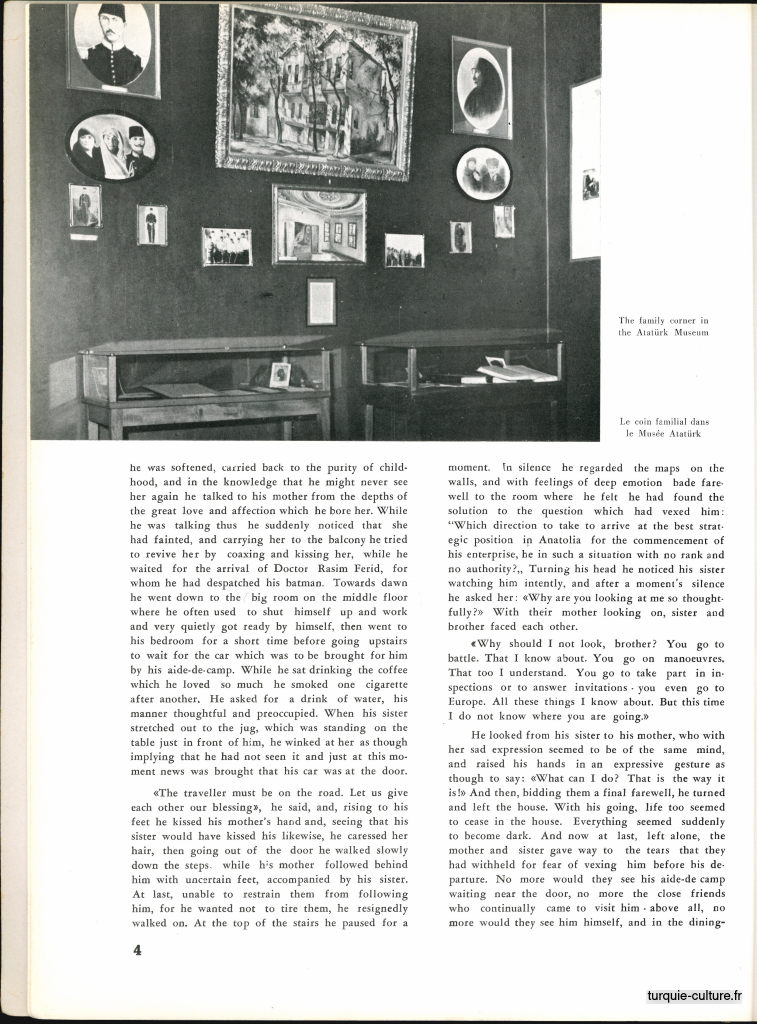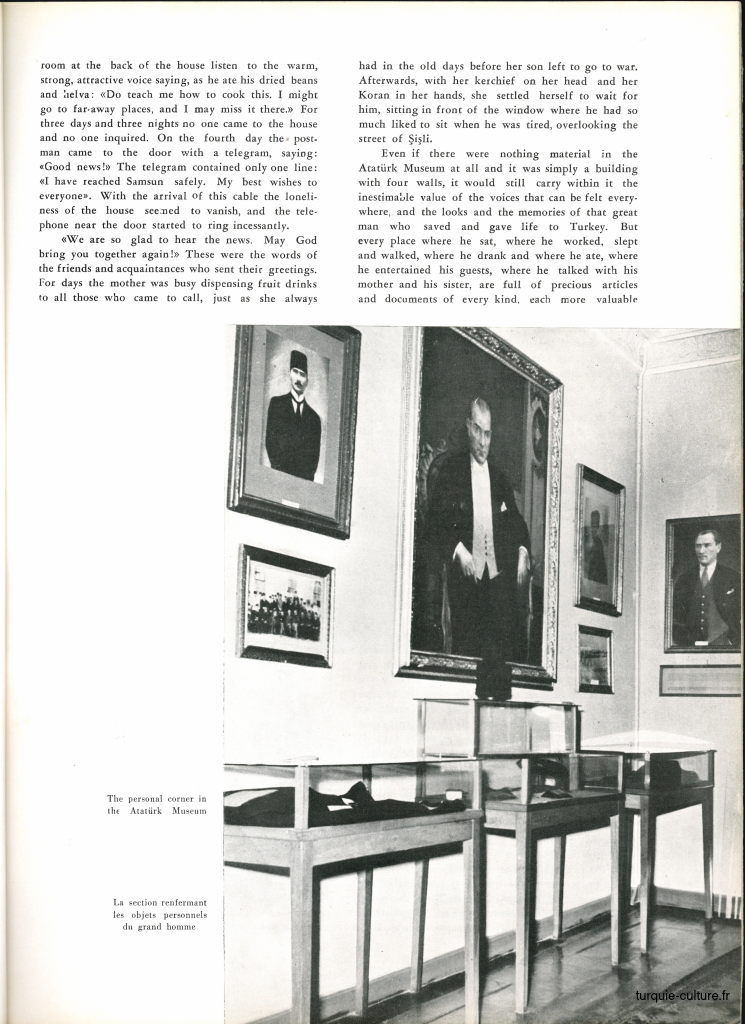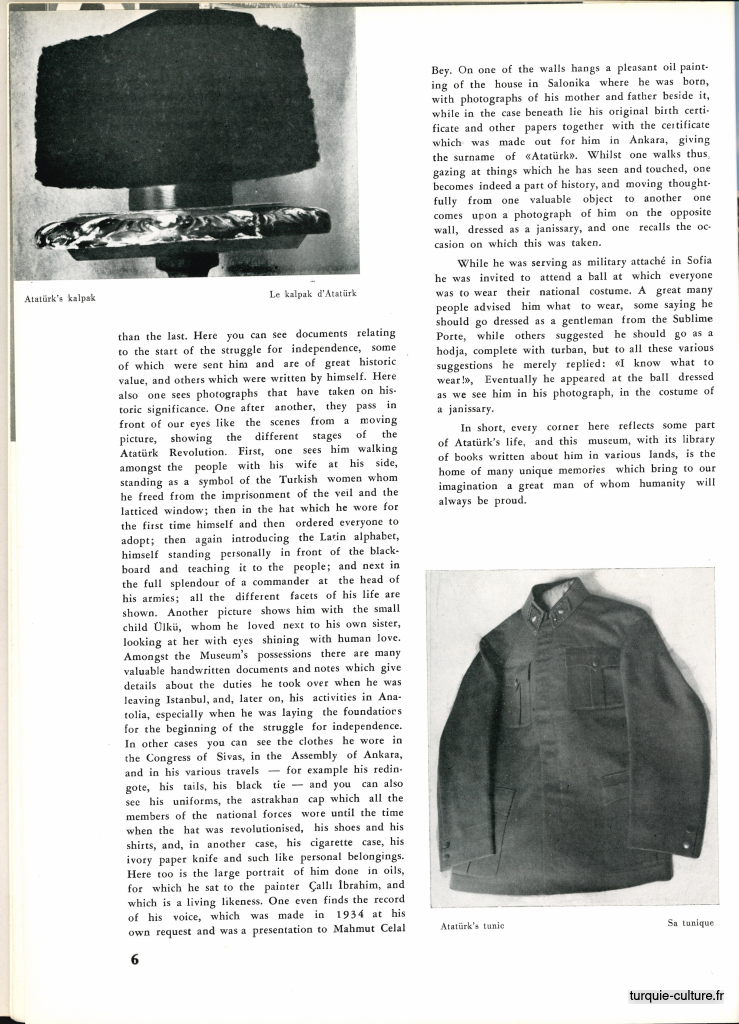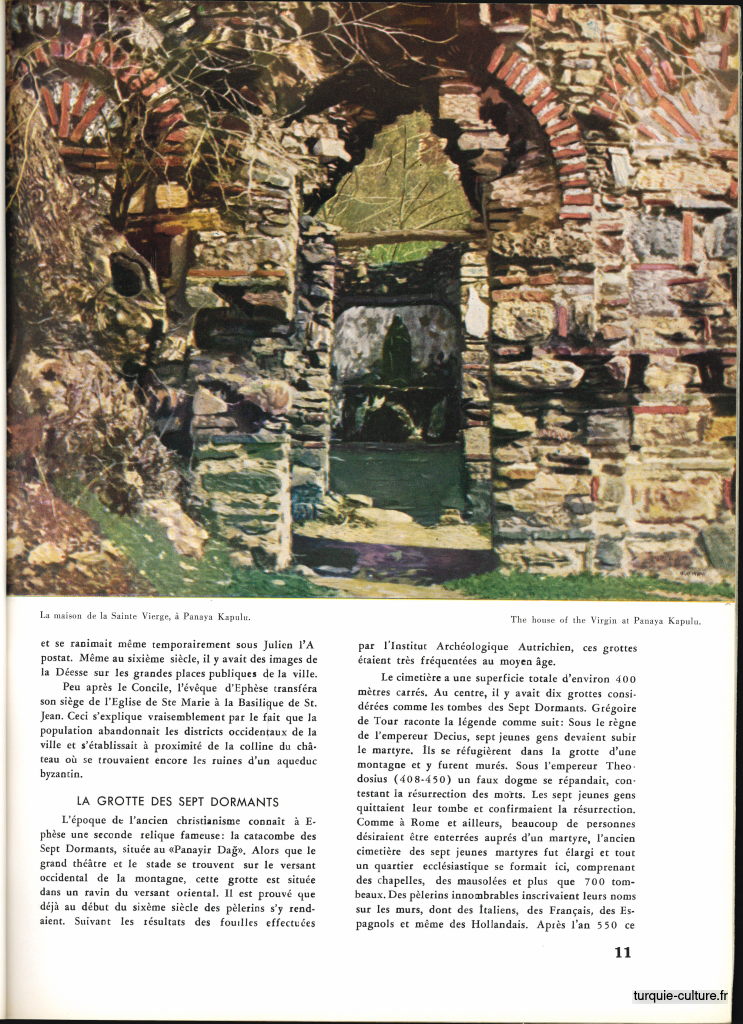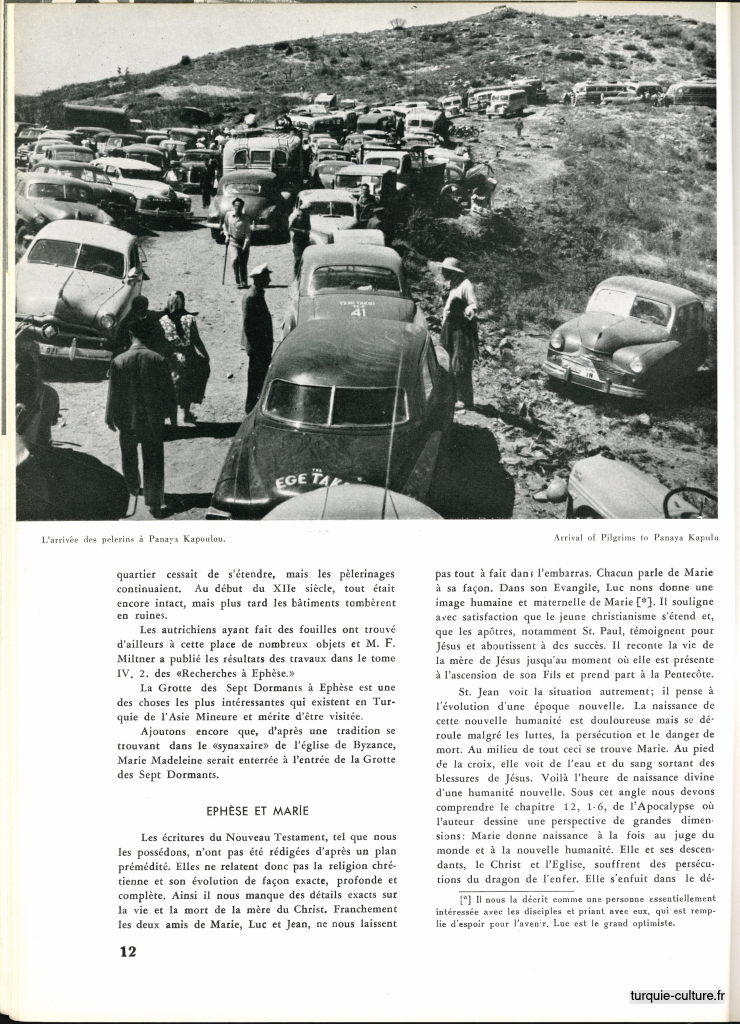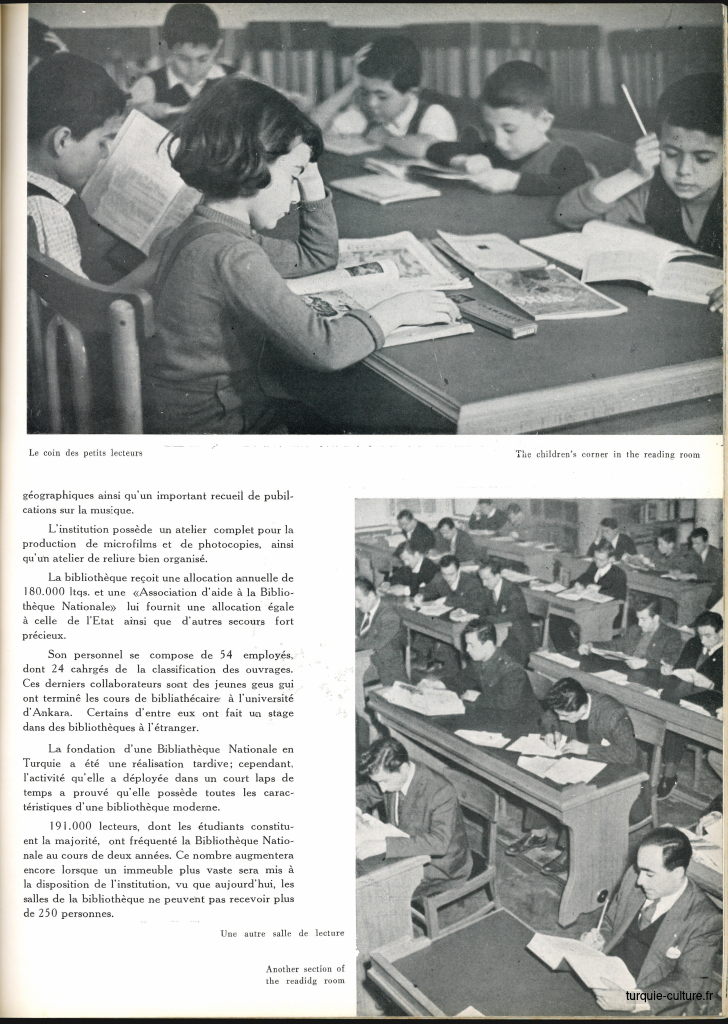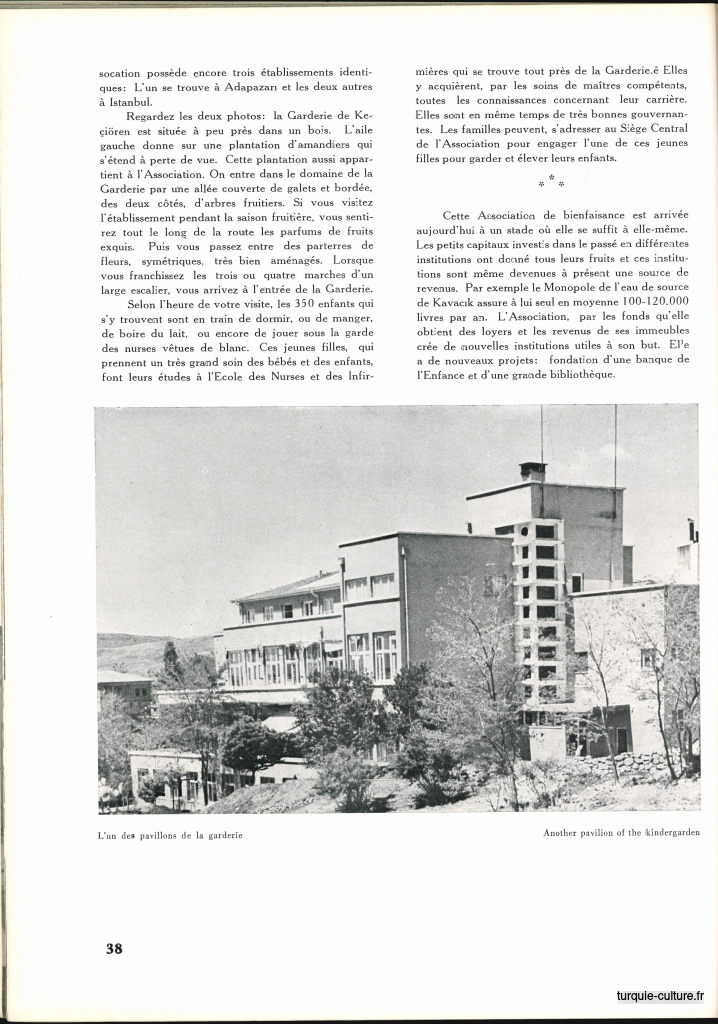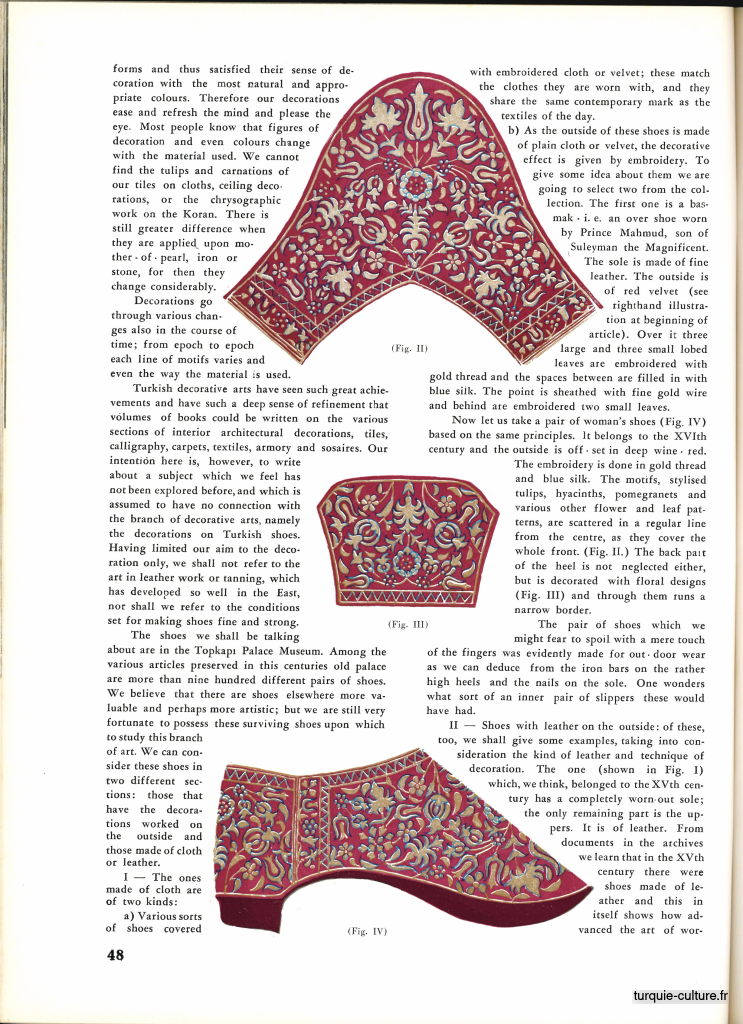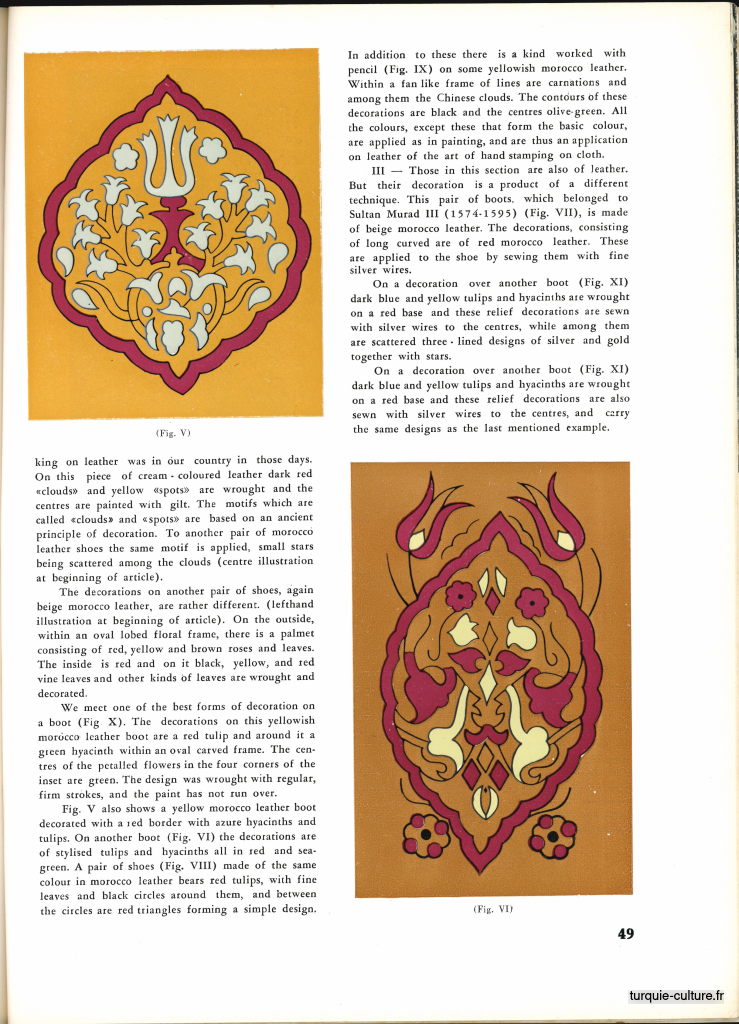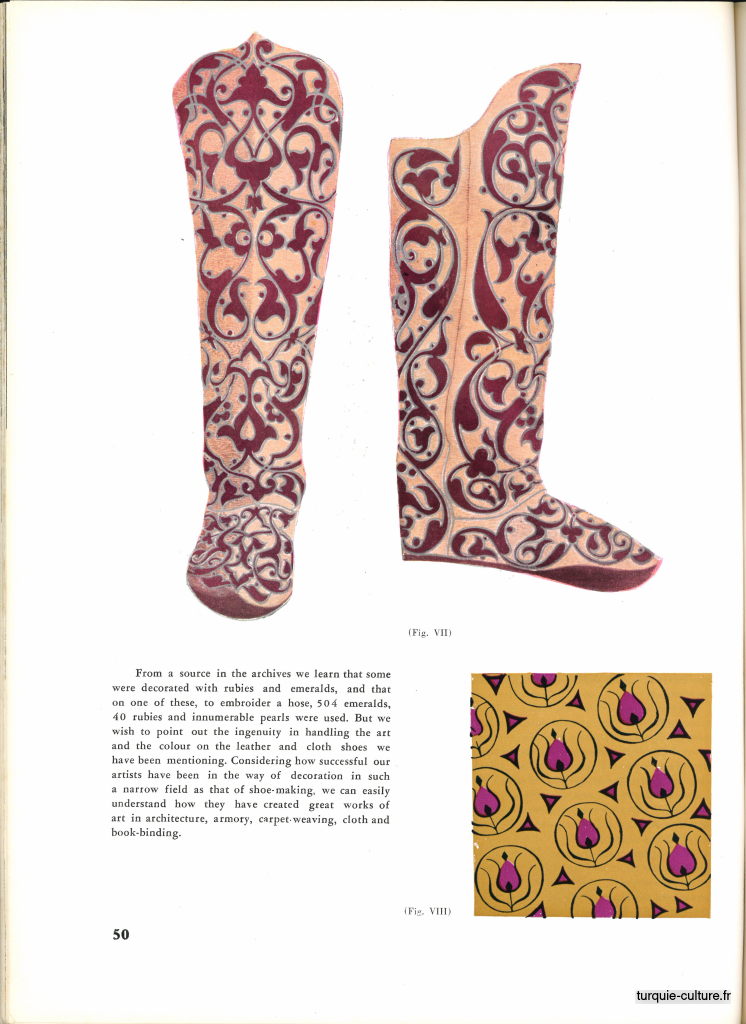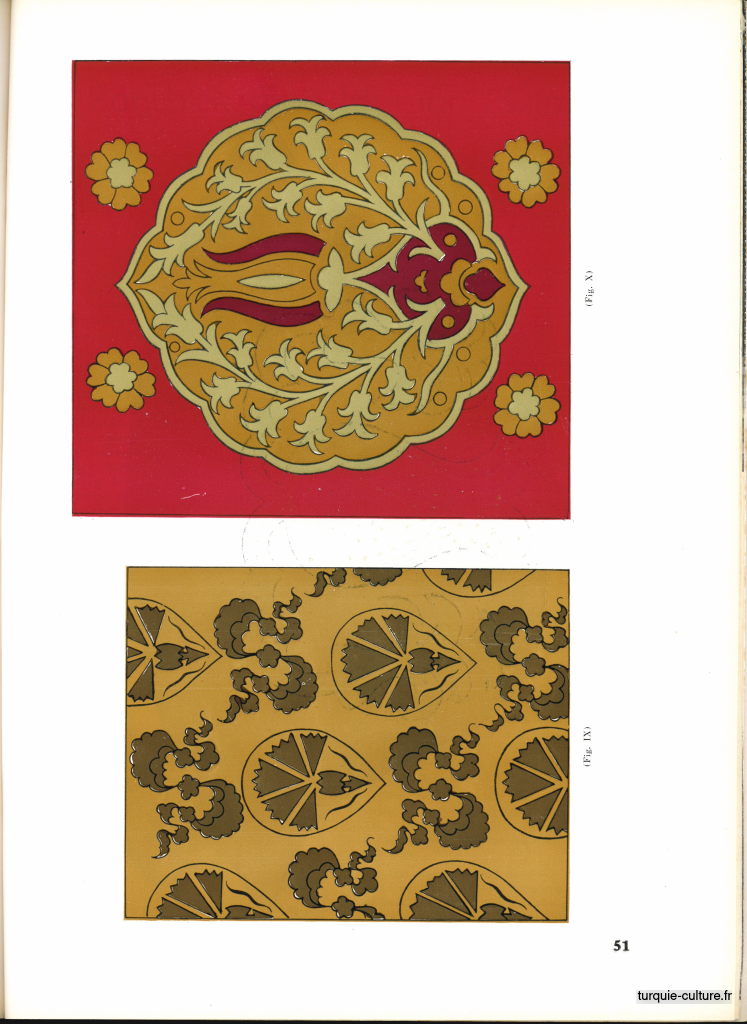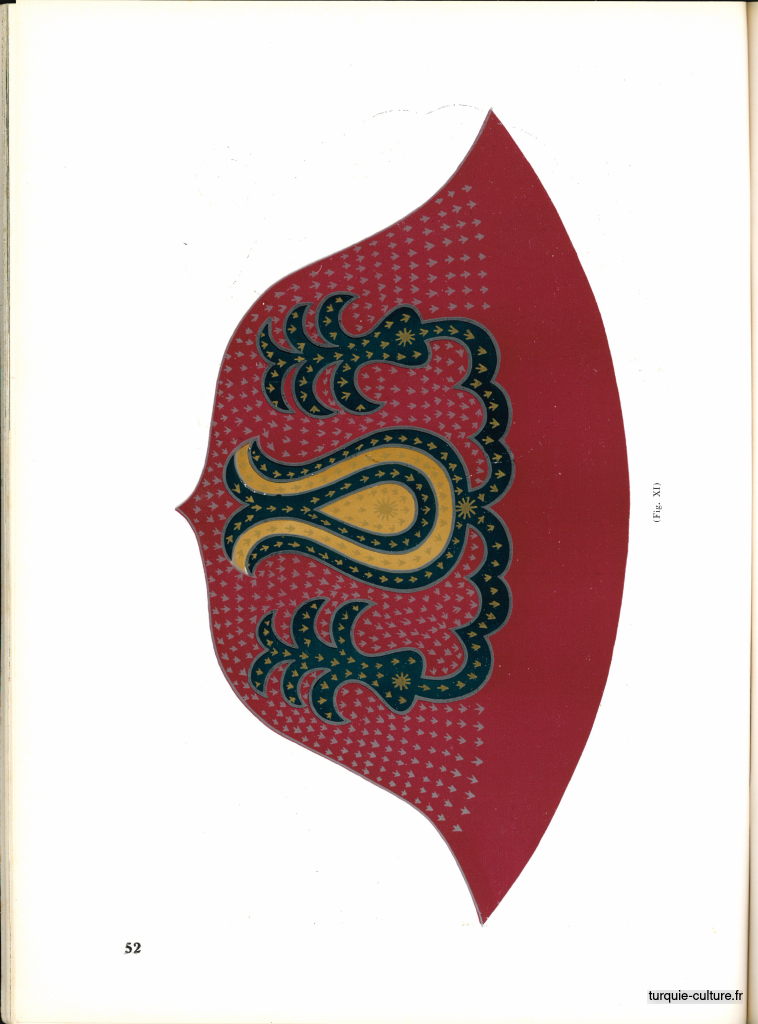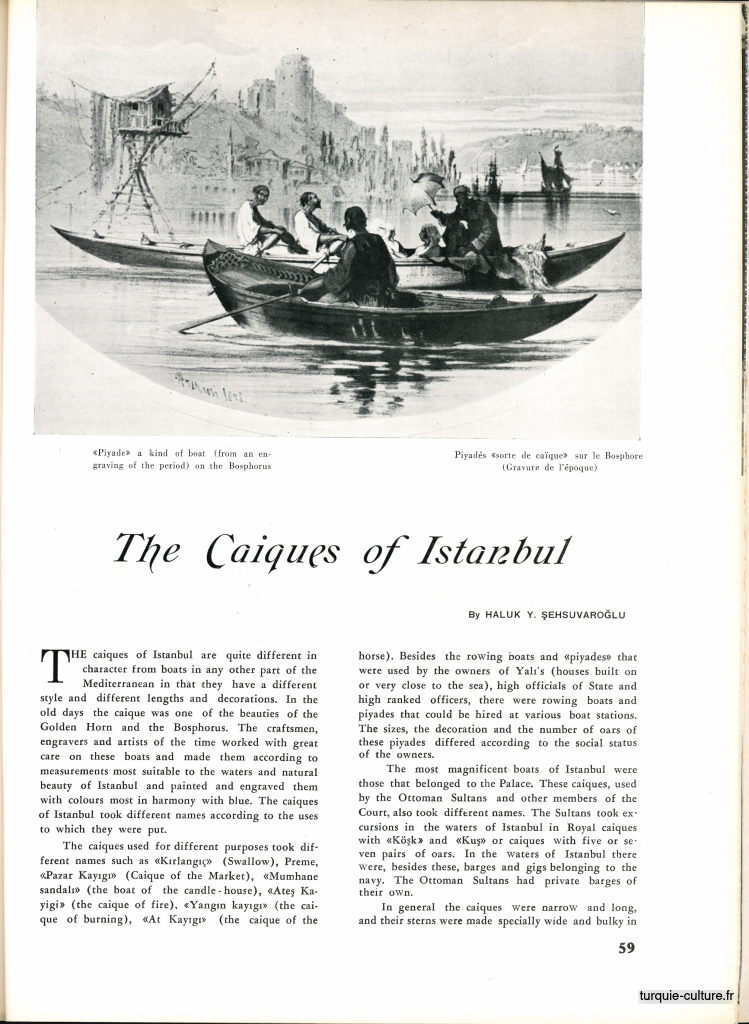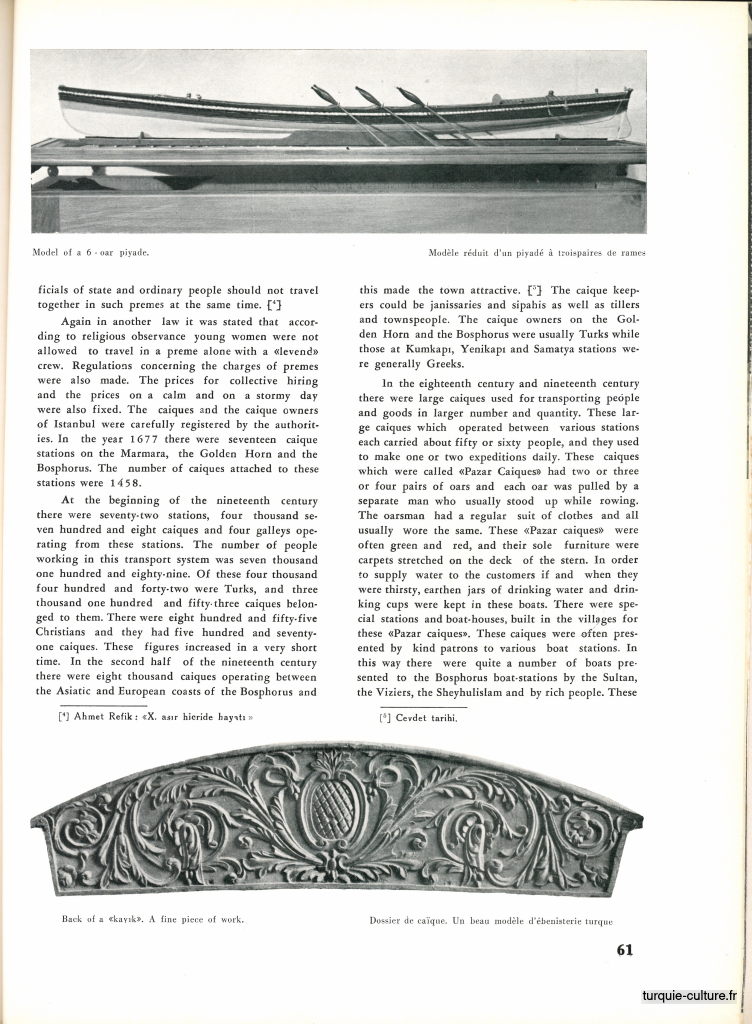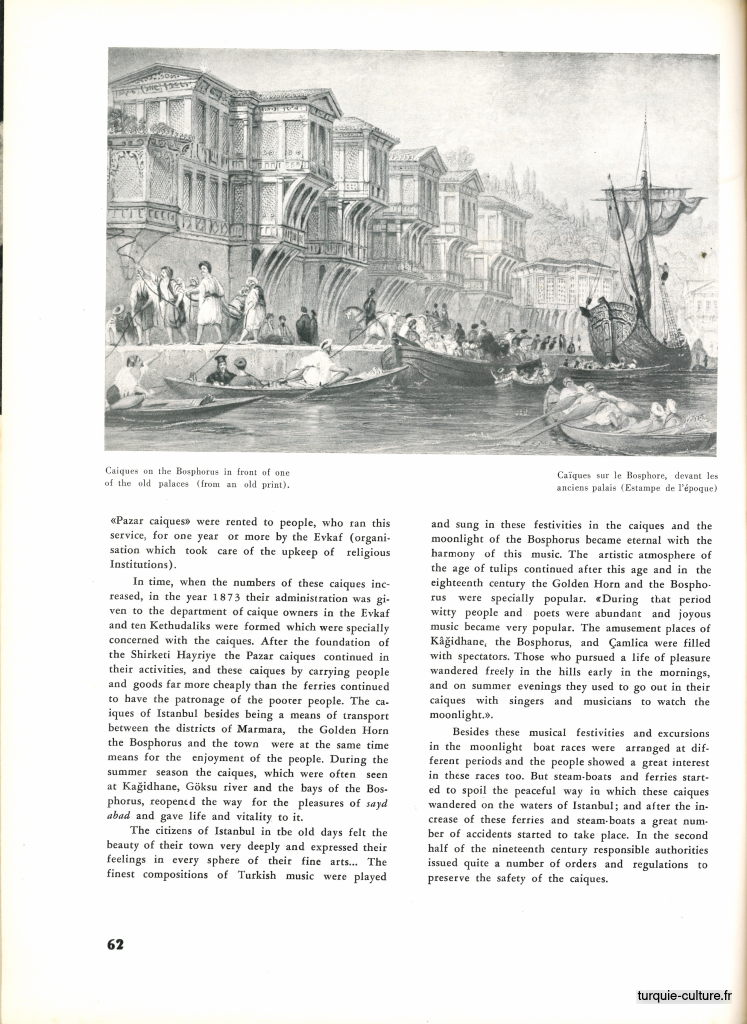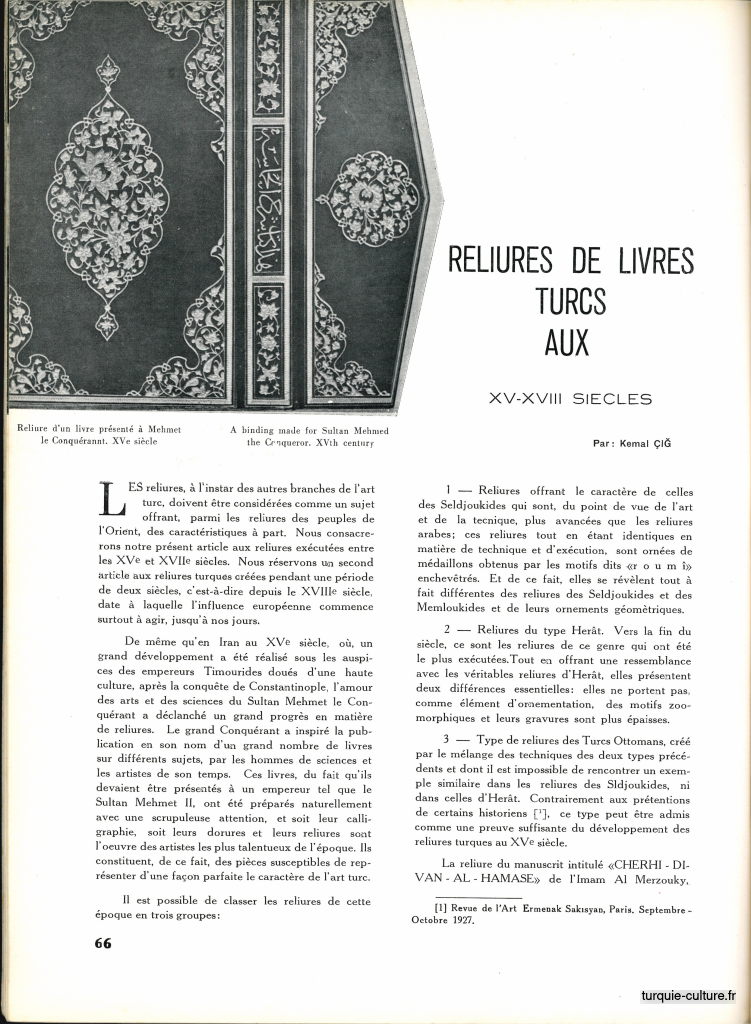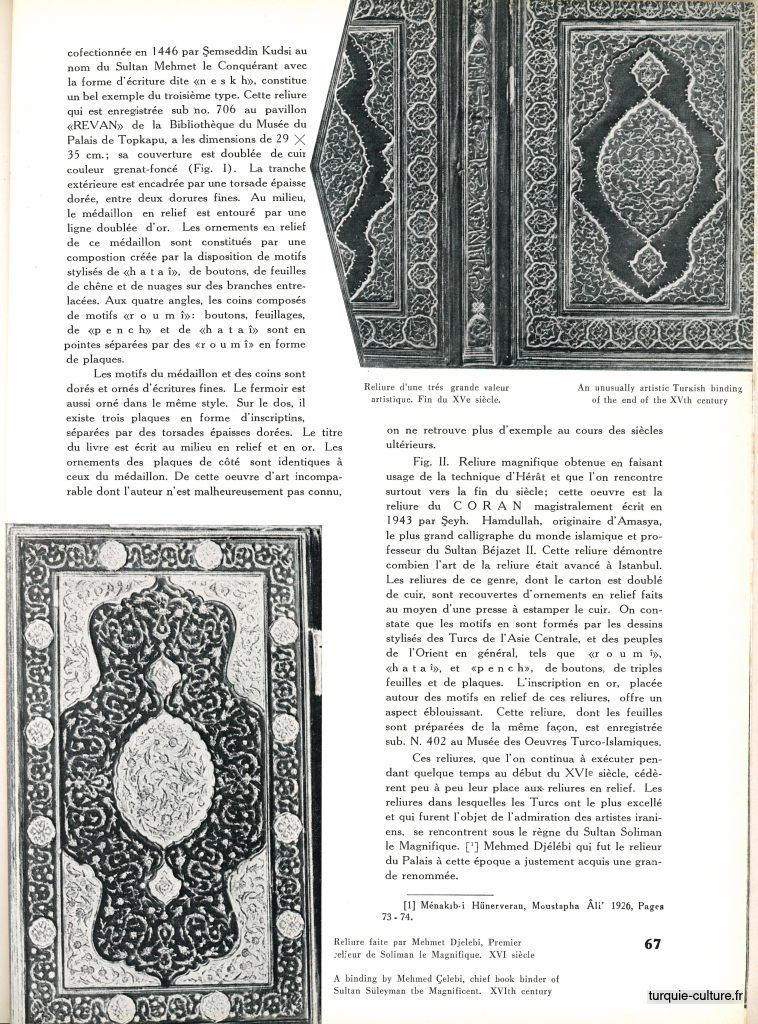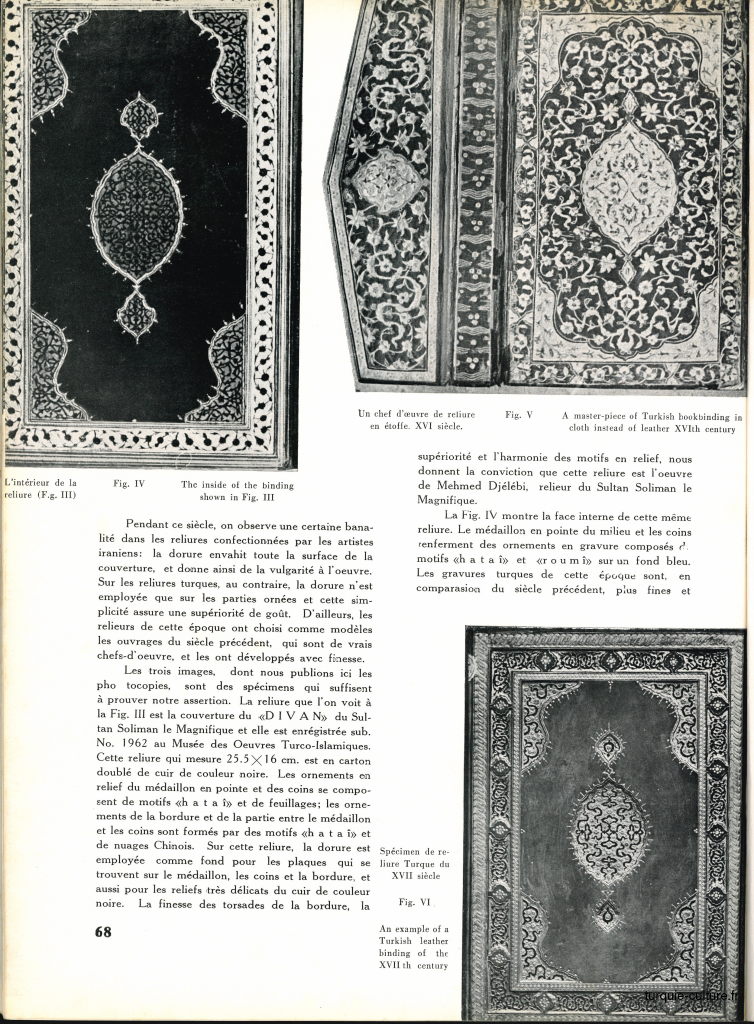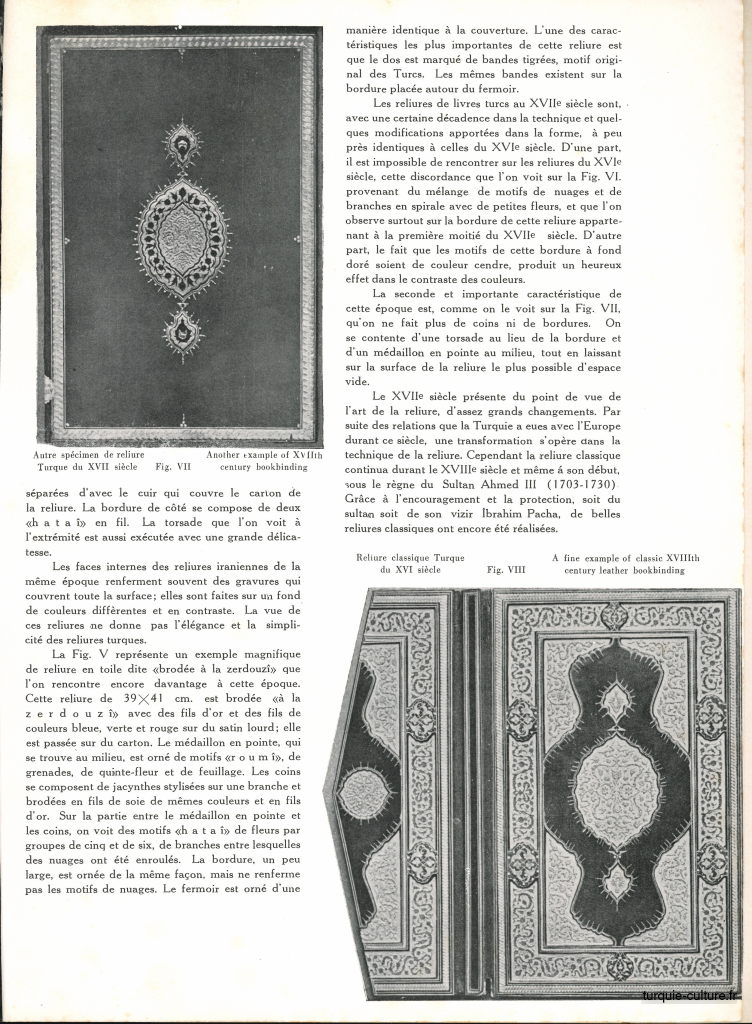Comme pour la revue qui l'a précédée, "La Turquie Kémaliste", le but de la revue Turkiye est de faire connaître la Turquie et les Turcs, son passé et son présent, comme l'annonce la préface. Les articles sont rédigés en Français et en Anglais et illustrés de photographies.
Türkiye, revue publiée par la Direction Générale de la Presse de la Radiodiffusion et du Tourisme. 32 x 24 cm, 70 pages
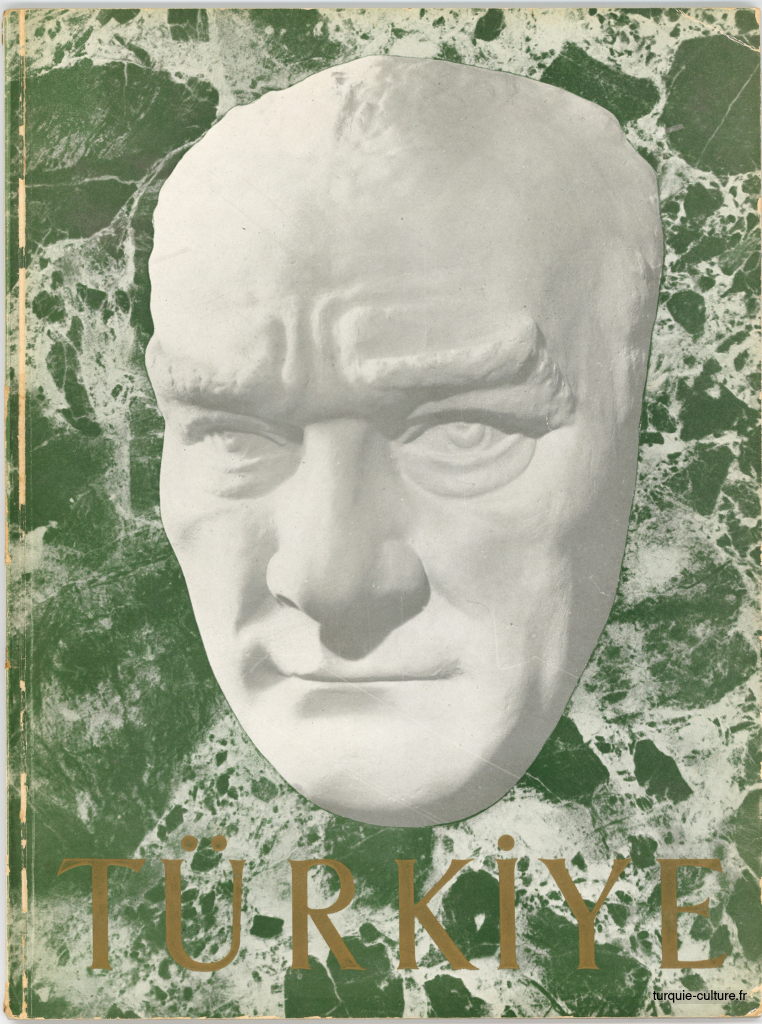
Dans la continuité de "La Turquie kémaliste", le nom de la revue change cependant : "Türkiye" signifie "Turquie" tout simplement. Aucun adjectif n'est ajouté pour mettre en avant un programme.C'est la Turquie "éternelle" que l'on veut montrer.
Le numéro 1 est publié en novembre 1952 (Bibliothèque nationale turque, https://kasif.mkutup.gov.tr/). Apparemment, cette revue n'eut que 2 numéros. On ne connaît pas sa diffusion, mais on peut supposer qu'elle était envoyée aux ambassades turques pour être distribuée. Elle n'était pas vendue. Son impression était de bonne qualité.
La revue commence, sans surprise, avec une présentation du musée Atatürk (qui déménagea plus tard à Anıtkabir).
On trouve ensuite des articles variés, certains signés, d'autres non : sur l'archéologie (Ephèse), l'histoire (caïques d'Istanbul), les musées, les artisanats traditionnels (outils pour l'écriture, reliure), le pays (lac d'Egirdir), une industrie moderne comme la céramique, la politique sociale avec un article sur la protection de l'enfance, les courses hippiques, le zoo d'Ankara…
Les auteurs peuvent être des conservateurs de musée, des historiens, des journalistes etc
Sommaire de Türkiye n°1
- The Atatürk Museum, pages 3-6 [Anglais]
- La ville d'Ephèse renaissante, Dr K. Geschwind, prêtre du Diocèse de Bâle, pages 7-14 [Français]
- The "camera" of Turkiye. At the zoo of Ankara, pages 15-20 [Anglais]
- Turkish writing tools, pages 21-26, Ismaïl Baykal, Director of the Municipal Museum
[Anglais] - La Bibliothèque Nationale, pages 27-29 [Français]
- Le Musée d'Art Turco-islamiques, pages 30-35, Elif Naci [Elif Naci Kalpakçıoğlu, 1898-1987], Directeur a. l. [Français]
- L'Association de la Protection de l'Enfance en Turquie, pages 36-40 [Français]
- The Town and the Lake of Egirdir, pages 41-46, Hikmet Turhan Dağlıoğlu [1900-1977] [Anglais]
- Turkish Decorative Arts and Turkish Shoes, pages 47-52, Tahsin Öz [1887-1973], Former Curator of Topkapi Saray Museum [Anglais], illustrations en couleurs
- Cats I have known. Ponchik and Human Beings, 53-54, Mesut Cemil [Anglais]
- La Nouvelle Industrie Céramique Turque, pages 55-58, Melih Basar [Français]
- The Caiques of Istanbul, 59-62, Halûk Y. Şehsuvaroğlu [1912-1963] [Anglais]
- The Gazi Horse Race. The Turkish Derby, 63-65, Kâzım Berkmen [Anglais]
- Reliures de livres turcs aux XV-XVIII siècles, pages 66-69, Kemal Çığ [né en 1913] [Français]
Les articles sont illustrés de nombreuses photos en noir et blanc, quelques-unes en couleurs, dans l'article sur Ephèse et dans celui sur les chaussures turques.
La couverture, en couleurs, avec TÜRKIYE en capitales dorées, représente le visage d'Atatürk, dans la continuité des derniers numéros de la revue "La Turquie Kémaliste".
Sur 14 articles, 7 sont en Anglais, 7 en Français. La préface est en Anglais.
Halim Tevfik Alyot (né en 1909) fut député de 1958 à 1961.
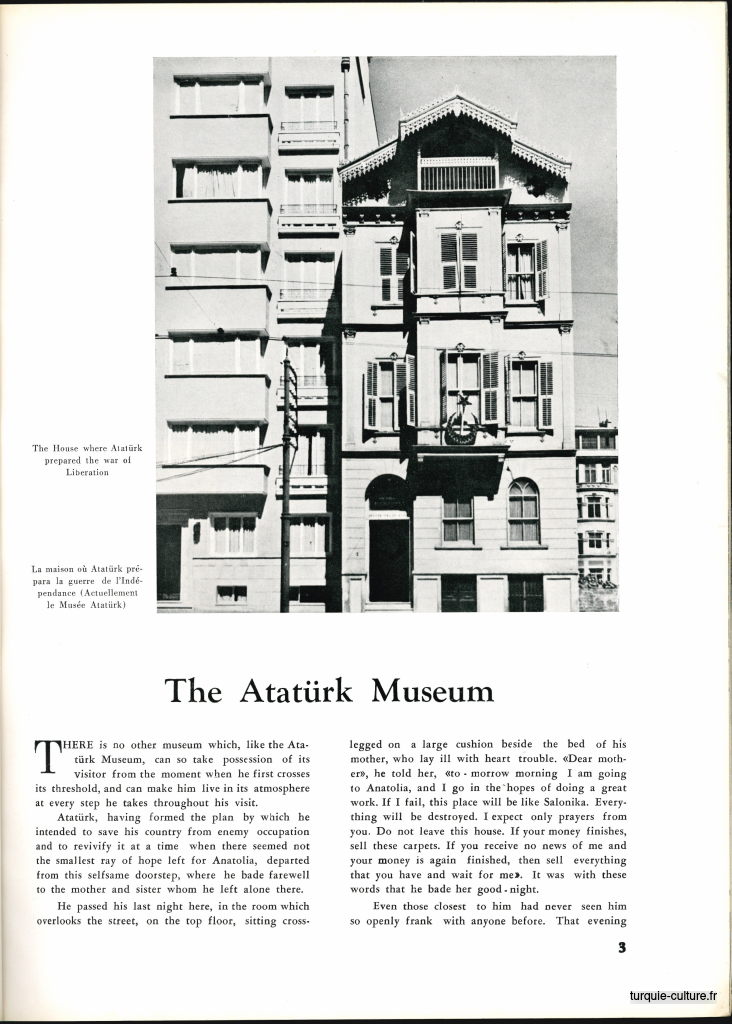
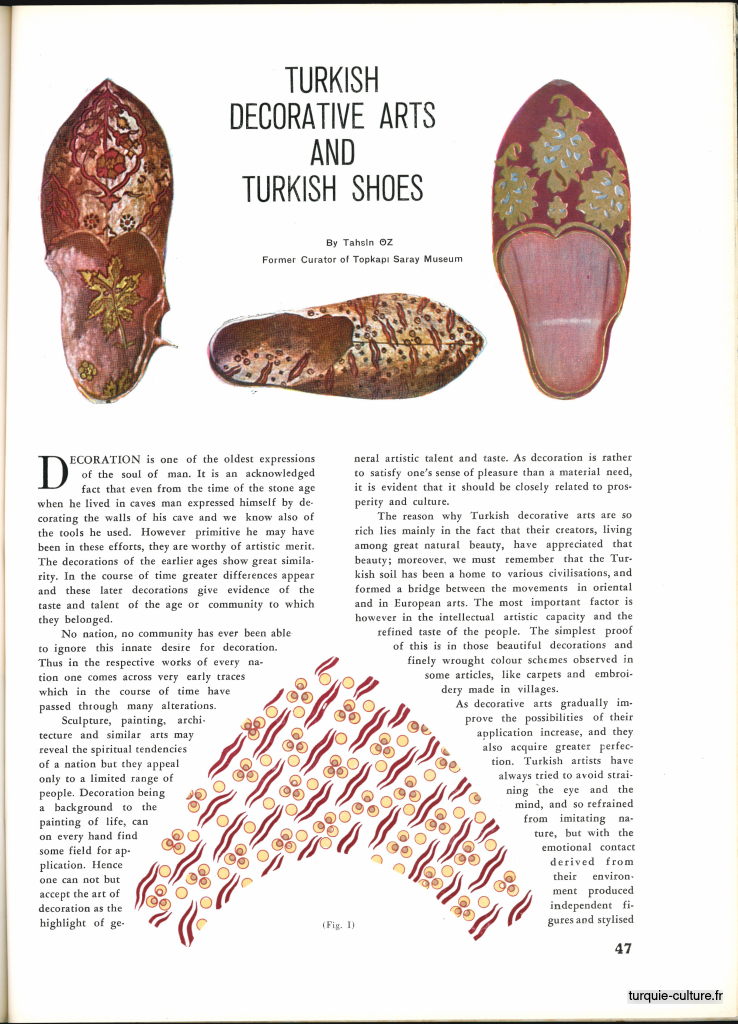
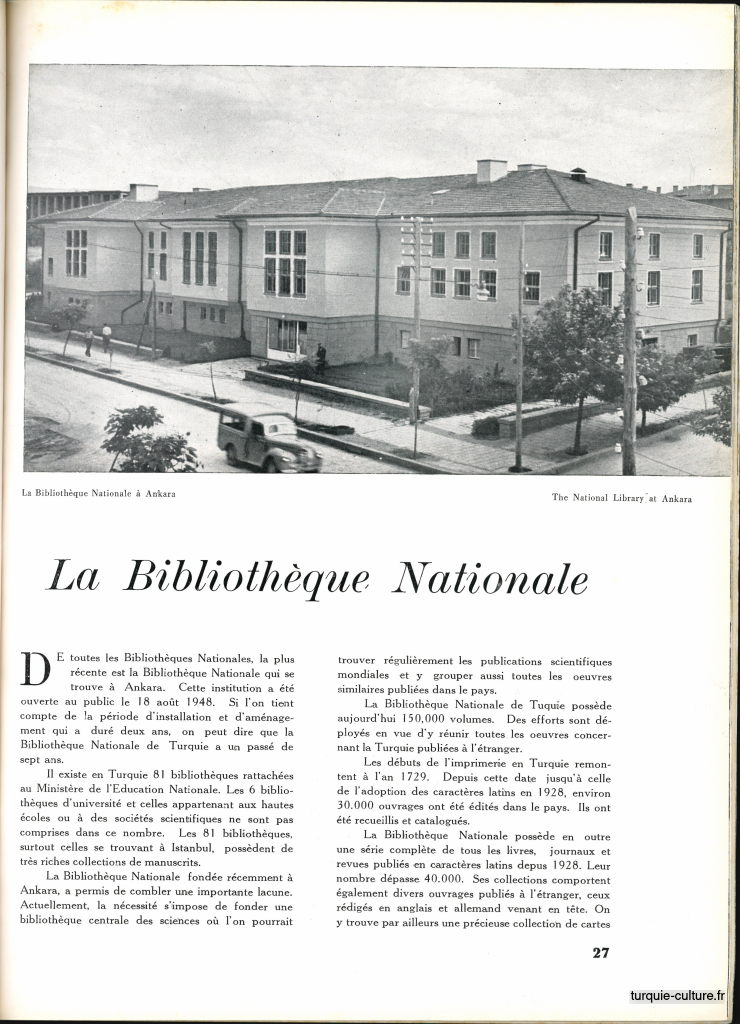
Préface de Türkiye
The present bi-monthly publication is the continuation of La Turquie Kémaliste. The fact that it bears the name of Türkiye (Turkey) will invest it with particular significance. By means of articles and essays in various languages, it will continue to ensure, like its predecessor, a wider knowledge and a deeper understanding of Turkey and of Turkish affairs.
The Turkish People has a long and glorious past of which it is justly proud. The Turks have played a prominent role in the history of mankind, and have great achievement to their credit. It is, therefore, for us both a right and a duty to continue to acquaint the world with their past progress and future aspiration. In so doing, we shall also have the pleasure of submitting to the consideration of our foreign friends then care with which we are striving to preserve and restore the innumerable relics of many ancient civilizations on our soil.
Much of what has been said and written about Turkey abroad has been coloured by biassed or mistaken views. In this publication we will always portrait Turkish facts and events with the almost objectivity, for we believe that our impartial and truthful treatment of theses subjects will win for us the confidence and understanding of an ever-increasing number of friends in all parts of our strong attachment to the ideals of the United Nations Organization, which strives to bring nations closer together by means of mutual knowledge and understanding.
We Turks have had the satisfaction of harvesting in a very short time the fruit of our continued efforts to develop our democratic institutions, and we have also been inspired by the conviction that those countries which are now cooperating heart and soul for the realization of the ideals of the United Nations will sooner or later see the fulfilment of their dream of lasting peace, prosperity and happiness on earth.
In this connection it would certainly not be out of place to recall here once again Atatürk's slogan "Peace at home and peace abroad", and the sacrifices which we have willingly made to uphold it even against the biggest odds.
Whenever its independence and freedom have been threatened, the Turkish people has always fought unflinchingly with all its might. Similarly, in the cause of peace, it has never failed to react with equal susceptibility and to endure equal sacrifices. Furthermore, we Turks are firmly attached to the principles of popular sovereignty and democracy; while the remarkable maturity demonstrated in recent years by the Turkish people, engaged in a struggle for the fullest possible attainment of a democratic regime, and the spirit that inevitably paved the way to the general elections on May 14, 1950, are an eloquent expression of the very high standard of political education and perception acquired by the Turkish people.
It should be clearly stated, of course, that these are not attributes only only recently acquired, for it is obvious that national traits are the sum total not of one generation or period, but of the entire course of history. This traditional Turkish spirit, which has so profoundly made itself felt in the past, is manifesting itself with equal vigour today on the battlefields of Korea, where we are fighting for a cause which is very dear to us.
As from this very first issue, Turkiye will present to its readers all over the world articles of permanent interest from the pens of writers competent in their respective fields describing the Turkish conception of civilization and democracy, the historical background, and the past and present achievements a,d mode of life of the Turkish people, together with its traditions, culture, literature, and philosophy ; the masterpieces and works of art abounding in Turkey ; and the relics of ancient civilization which we are striving to preserve and restore on our soil.
This is a task from the accomplishment of which we shall derive much happiness.
Dr Halim Tevfik Alyot, Director General, Turkish Press, Broadcasting and Tourist Department
Quelques pages de Türkiye
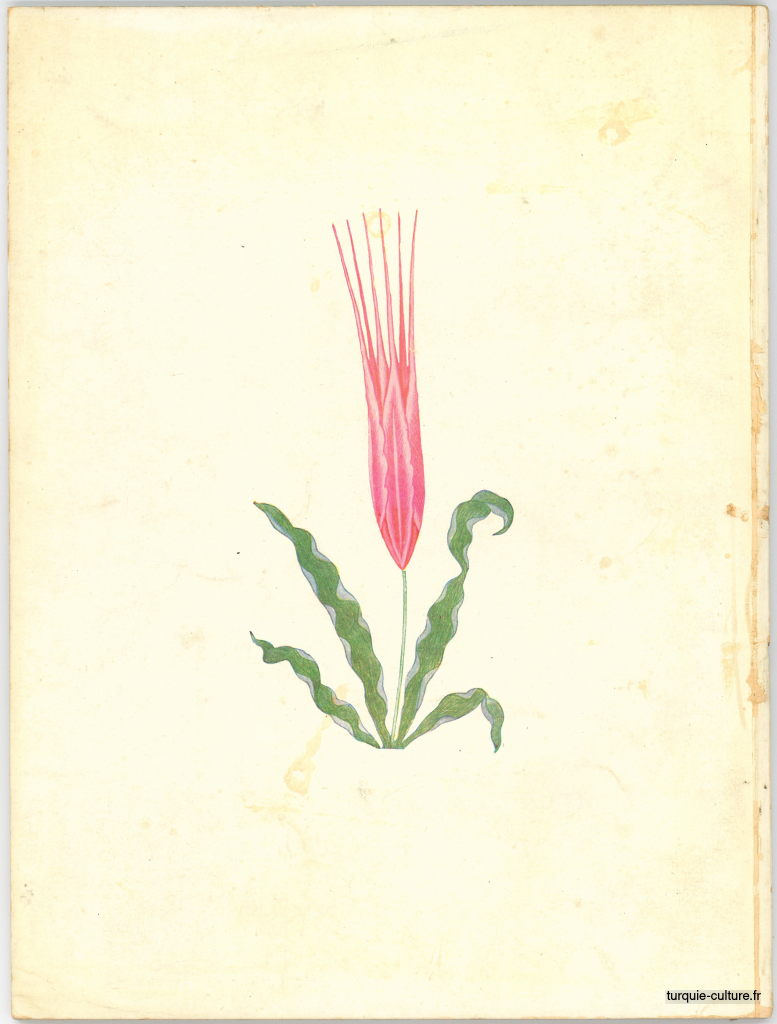
Quatrième de couverture
